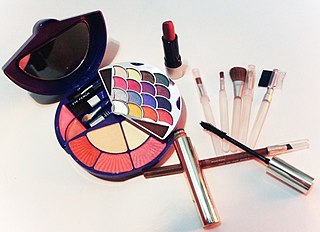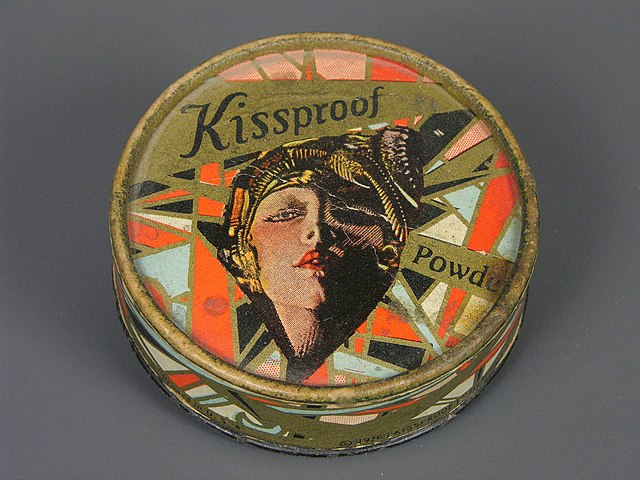Cosmetics
substances used to enhance the appearance or odor of the human body From Wikipedia, the free encyclopedia
Remove ads
Cosmetics are products used to make the human body look different. Often cosmetics are used to make someone more attractive to one person, or to a culture or sub-culture. In Western culture, women are the main users of cosmetics. Their use by men is less frequent, except on stage, television and movies. Cosmetics are widely used in the world of acting.[1]





All cosmetics are temporary. They need to be renewed after a certain time. Cosmetics include lipstick, powders (e.g. blush, eyeshadow), and lotions as well as other things.
Remove ads
Facial cosmetics
Most cosmetic products and methods are intended to improve the look of the face. There are two categories: those which improve the basic quality of the skin, and those which sit on the skin during active social life.
Skin care
The purpose here is to clean the skin, improve its basic quality, and prepare it for the application of make-up. Products are of these types:[2][3]
- Cleansers, used to remove make-up and clean the skin.
- Toners, used to remove oil from the skin and close the pores on the skin.
- Moisturizers, used to make the skin soft and to reduce evaporation of water from the skin.
- Primers, used to prepare the surface for the later application of make-up.
- Concealers, to mask flaws or slightly modify the colour of the skin.
- Foundation, a product which holds face-powder in place. More generally, it create an even, uniform colour, covers flaws and adjusts the natural skintone.
Make-up
These are the cosmetics which the viewer actually sees on the face (or other parts of the body). They are some or all of these:
- Rouge or blusher: talcum-based reddish powder, to give a more youthful appearance. Used mainly to emphasize the cheekbones, sometimes to redden the cheeks. Very ancient, used by the ancient Egyptians.
- Face powder. Or translucent powder applied with a powder puff, brush or sponge, it comes in all shades to match skin.
- Lipstick.
- Eye make-up.
- Hand care: manicure and nail polish
Remove ads
History of cosmetics
The word cosmetics comes from the Greek κοσμητικός (kosmētikos), "skilled in ordering or arranging".[4]
Archaeological confirms use of cosmetics in ancient Egypt and Greece. Cosmetics used included:
- Castor oil used by ancient Egypt as a protection balm.
- Skin creams made of beeswax, olive oil, and rosewater, used by Romans.
- Vaseline and lanolin in the nineteenth century.
- Nivea Creme was the first stable water-in-oil emulsion, 1911.
The Ancient Greeks also used cosmetics.[5][6] Cosmetics are mentioned also in the Old Testament. Men who think makeup is dishonest sometimes call makeup fakeup.[7]
The makeup market originated and developed in the United States during the 1910s, thanks to the pioneering efforts of influential figures such as Elizabeth Arden, Helena Rubinstein, and Max Factor. These visionary individuals played a crucial role in shaping the cosmetics industry. Shortly before the outbreak of World War II, Revlon entered the scene, followed by Estée Lauder in the post-war period, further solidifying the market's growth and diversity.
Elizabeth Arden, Helena Rubinstein, Max Factor, Revlon, and Estée Lauder were instrumental in introducing innovative beauty products and revolutionizing the way makeup was perceived and used. Their contributions not only elevated the concept of makeup but also propelled it into the mainstream.
Remove ads
Related pages
References
Wikiwand - on
Seamless Wikipedia browsing. On steroids.
Remove ads
